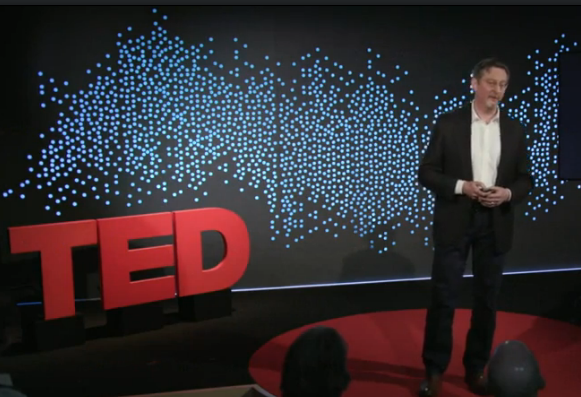But glass has a limited ability to be expressive.
但是玻璃的表现力毕竟是有局限的。
This is a section of wall framing a plaza in the pre-Hispanic city of Mitla, in southern Mexico.
这是在墨西哥南部前西班牙城米特拉一个广场外墙的一部分。
Those 2,000-year-old carvings make it clear that this was a place of high ritual significance.
这些历经2000年的雕纹让这里看起来充满了宗教仪式气息。
Today we look at those and we can see a historical and textural continuity between those carvings,
现今,当我们看向这些建筑,我们能够清晰地感受到四周的山脉和取材于当地的石材,
the mountains all around and that church which is built on top of the ruins using stone plundered from the site.
并建造于废墟之上的教堂之间,为历史与构造留存的一脉相承的连续性。
In nearby Oaxaca, even ordinary plaster buildings become canvasses for bright colors,
在附近的瓦哈卡,即使是普通的石膏建筑也会成为丰富多姿的色彩表达,
political murals and sophisticated graphic arts.
政治壁画或是复杂精美的图案艺术的画布。

It's an intricate, communicative language that an epidemic of glass would simply wipe out.
这些错综复杂的具有交流性的语言,会因玻璃的盛行而被轻松抹杀。
The good news is that architects and developers have begun to rediscover the joys of texture without backing away from modernity.
好消息是,建筑师和开发商们已经开始在不脱离现代化的基础上重新发掘其他材质带来的乐趣。
Some find innovative uses for old materials like brick and terra-cotta.
有一些人找到了比如砖头或是赤陶瓦等旧材料的新用途。
Others invent new products like the molded panels
还有一些人则是发掘了新的建材,
that Snohetta used to give the San Francisco Museum of Modern Art that crinkly, sculptural quality.
比如Snohetta在旧金山现代艺术博物馆外观建设中用到的模压板,使得博物馆看起来富有皱巴巴的雕塑般的气质。
The architect Stefano Boeri even created living facades.
建筑师Stefano Boeri甚至创造了这种活着的表面纹理。
This is his Vertical Forest, a pair of apartment towers in Milan, whose most visible feature is greenery.
这是“垂直丛林”在米兰的一对公寓高楼,它们最显眼的特征便是那外表的绿色。
And Boeri is designing a version of this for Nanjing in China.
Boeri正在为中国南京设计一个类似的版本。
And imagine if green facades were as ubiquitous as glass ones how much cleaner the air in Chinese cities would become.
想象一下,如果这种绿色外观能够和玻璃一样普及的话,那么中国城市的空气质量将会得到多么大的改善啊。












